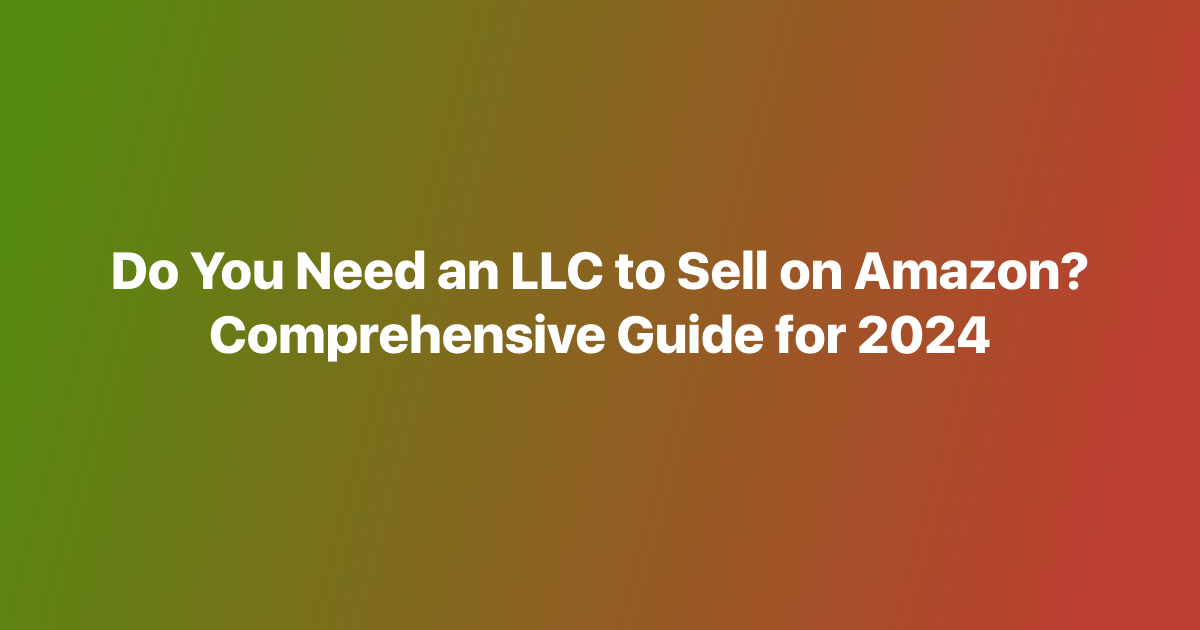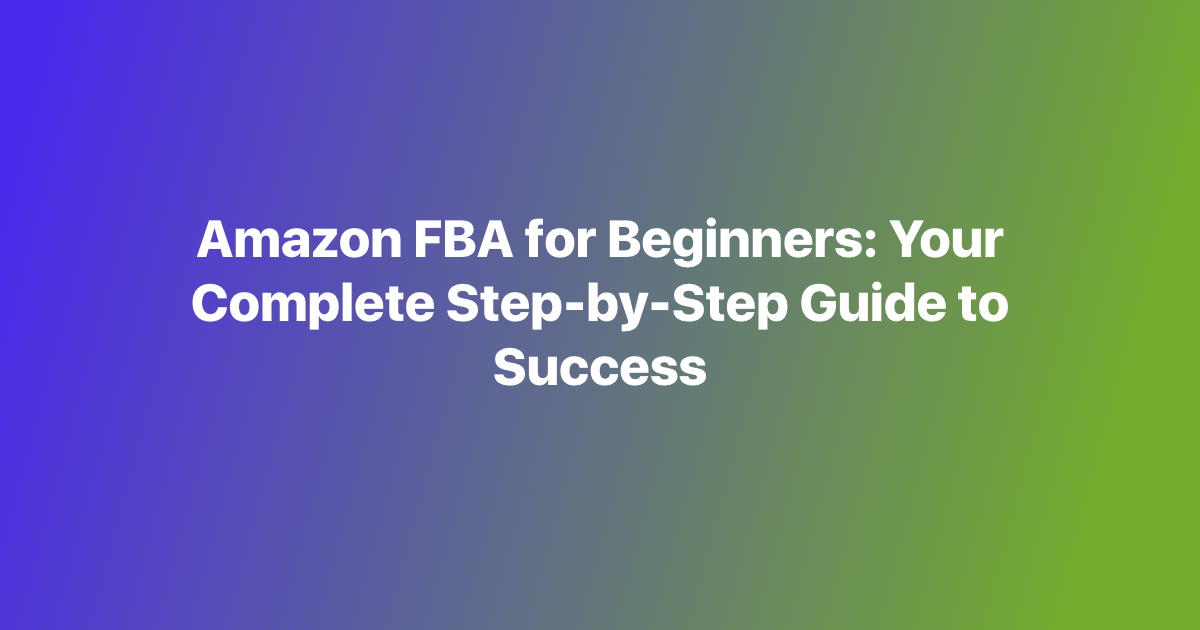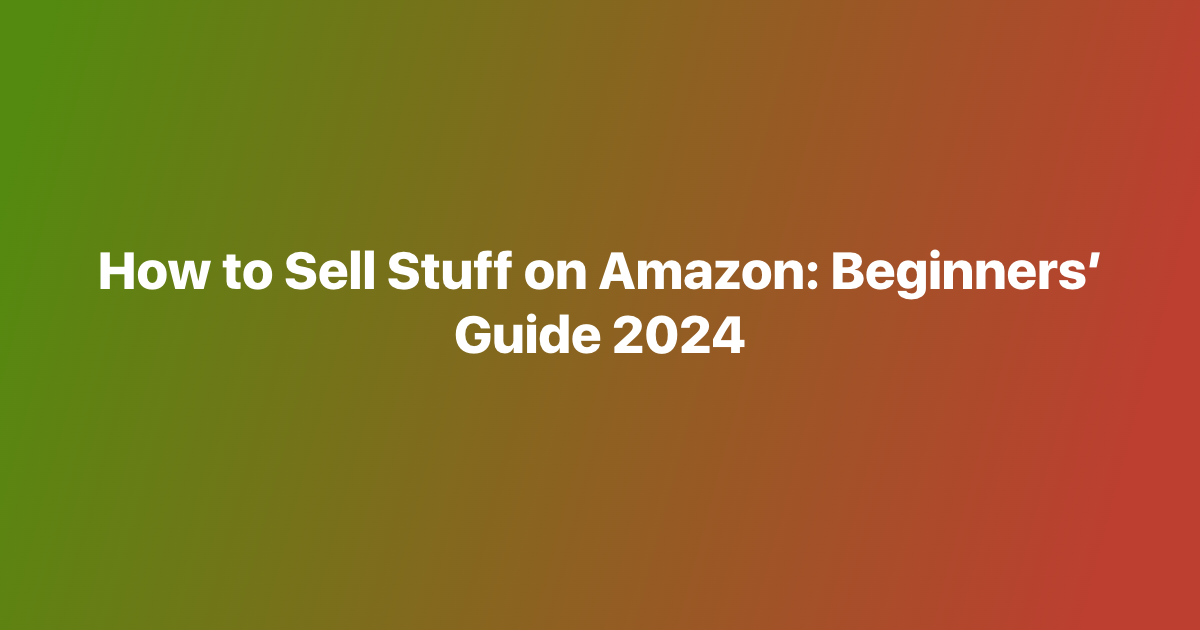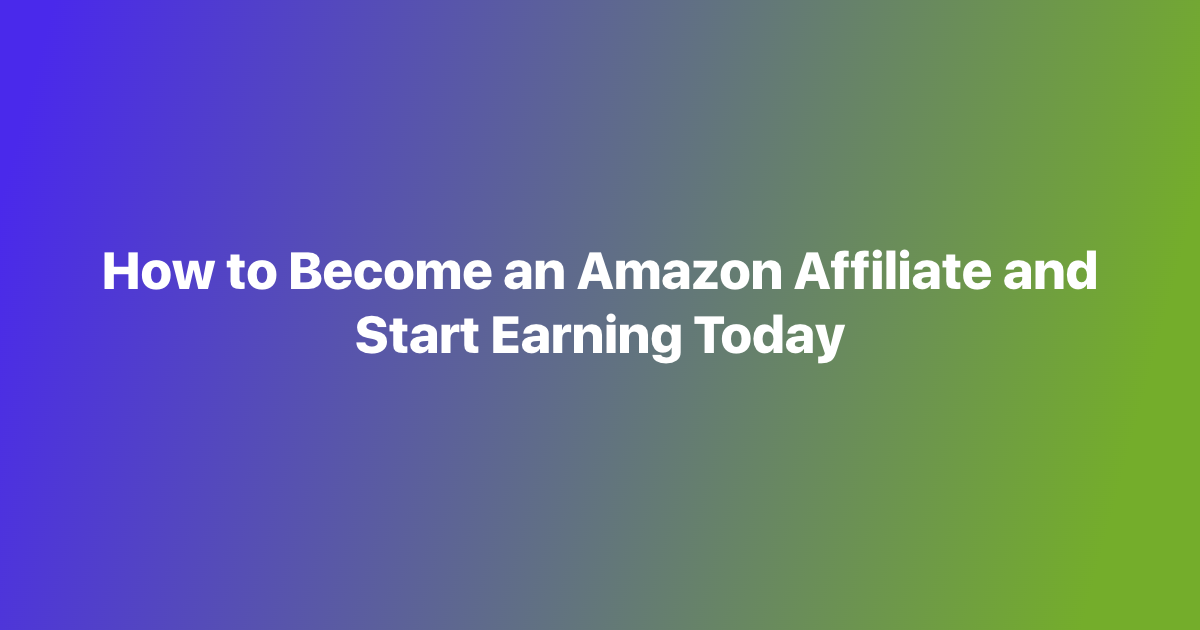Unveiling the Numbers Behind Amazon’s Marketplace
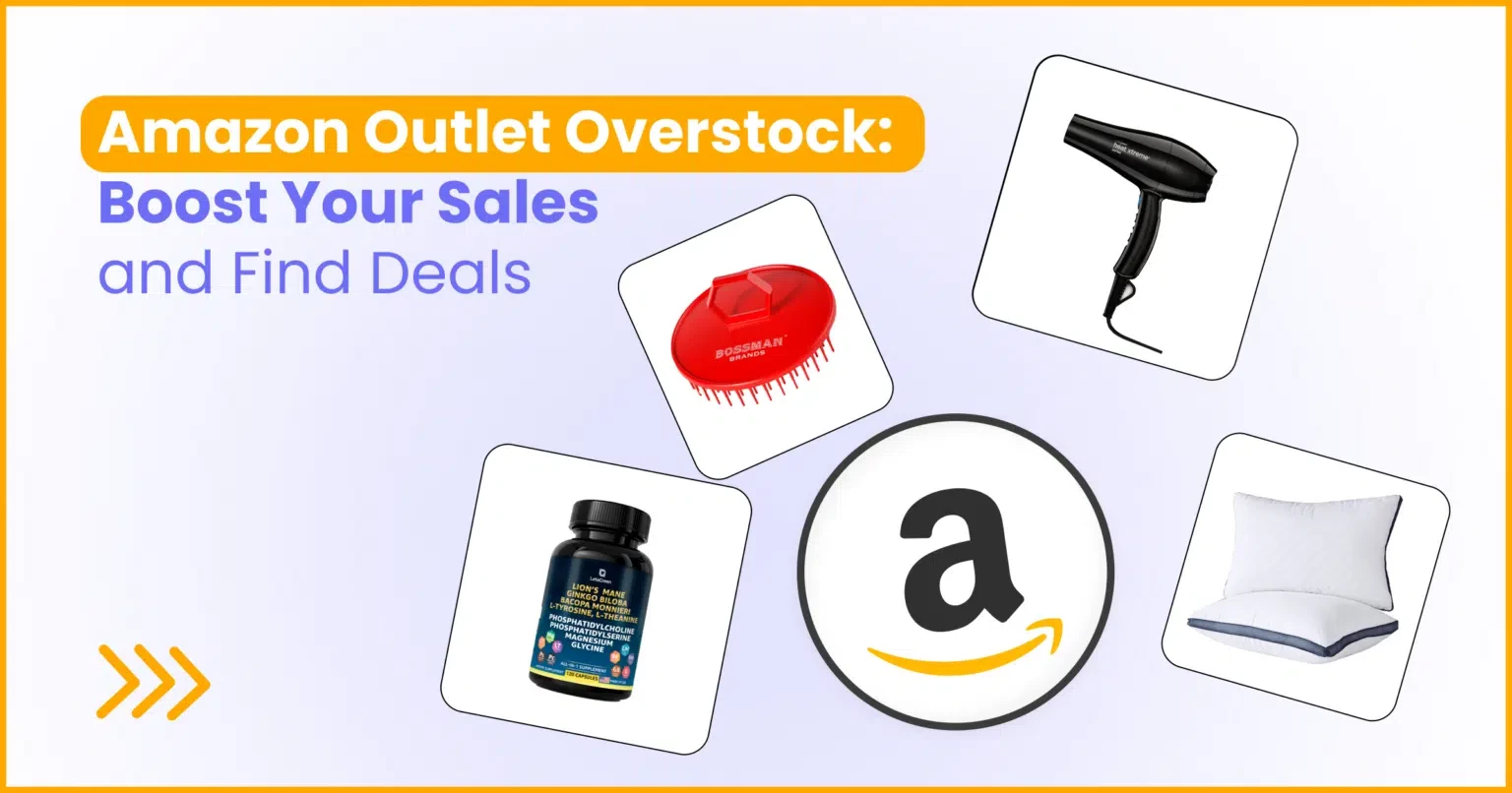
Understanding Amazon’s Seller Ecosystem
Amazon’s marketplace is a vast and dynamic ecosystem that connects millions of buyers with a diverse range of sellers. From individual entrepreneurs to large-scale businesses, Amazon provides a platform for anyone to reach a global audience. Understanding the intricacies of this ecosystem is essential for grasping the scale and impact of Amazon’s marketplace.
Brief Overview of Amazon’s Vast Marketplace
Amazon started as an online bookstore but quickly evolved into one of the largest e-commerce platforms in the world. Today, it offers a wide array of products across various categories, from electronics to clothing and beyond. The marketplace’s vastness is reflected in its seller base, which includes private label sellers, resellers, and artisans who sell handmade products.
Importance of Knowing How Many Sellers Are on Amazon
Knowing how many sellers are on Amazon is crucial for several reasons. For potential sellers, it provides insight into the level of competition they might face. For buyers, it highlights the variety and availability of products. Additionally, understanding the number of sellers can help stakeholders gauge the marketplace’s health and growth potential. This knowledge is particularly useful for those interested in sections like the Amazon Outlet Overstock, which deals with overstocked products and offers significant discounts.
By delving into the numbers behind Amazon’s seller community, we can better appreciate the scale and diversity of this global marketplace. Whether you’re curious about what is Amazon Outlet, how to navigate Amazon Outlet/Overstock, or understanding the concept of overstock on Amazon, this exploration will provide valuable insights into the thriving world of Amazon sellers.

The Evolution of Amazon’s Marketplace
Historical Growth of Sellers on Amazon
Amazon’s journey from a small online bookstore to a global e-commerce giant is marked by significant growth in its seller community. In the early 2000s, Amazon opened its platform to third-party sellers, allowing individuals and businesses to list their products alongside Amazon’s own offerings. This move was a game-changer, rapidly increasing the number of sellers and the variety of products available on the platform.
Over the years, Amazon introduced various programs and tools to support sellers, such as Fulfillment by Amazon (FBA), which allows sellers to store their products in Amazon’s warehouses and leverage its logistics network. This not only simplified the selling process but also made it more attractive for sellers to join. The result has been a steady increase in the number of sellers, contributing to the vast and diverse marketplace we see today.
Several factors have contributed to the growing number of sellers on Amazon:
- Ease of Entry: Amazon’s user-friendly interface and comprehensive support make it easy for anyone to start selling. The platform provides resources and tools to help sellers set up their stores, list products, and manage orders.
- Global Reach: Amazon’s extensive global reach attracts sellers from all over the world. Sellers can access a vast customer base, significantly expanding their market potential.
- Fulfillment by Amazon (FBA): The FBA program has been a major factor in attracting sellers. By handling storage, packaging, and shipping, Amazon allows sellers to focus on their core business activities. This convenience has led to a surge in the number of sellers using the platform.
- Amazon Prime: The popularity of Amazon Prime has driven more sellers to join the platform. Products eligible for Prime benefits, such as free shipping and faster delivery, often see higher sales volumes, motivating sellers to participate.
- Specialized Programs: Programs like Amazon Outlet Overstock and Amazon Prime Overstock Outlet provide additional opportunities for sellers to manage excess inventory and reach more customers. These programs are particularly beneficial for sellers looking to clear out overstock and attract bargain hunters.
- Technological Advancements: Advances in technology have made it easier for sellers to manage their online businesses. Tools for inventory management, analytics, and marketing automation have streamlined operations and increased efficiency.
- Customer Trust: Amazon’s strong brand reputation and customer-centric policies create a trustworthy environment for both buyers and sellers. This trust encourages more sellers to join and thrive on the platform.
By understanding these factors, we gain insight into why Amazon’s seller community continues to grow. Whether you’re looking to explore the overstock Amazon outlet or wondering how to get to Amazon outlet online, the evolution of Amazon’s marketplace reveals the dynamic nature of e-commerce and the opportunities it presents for sellers worldwide.
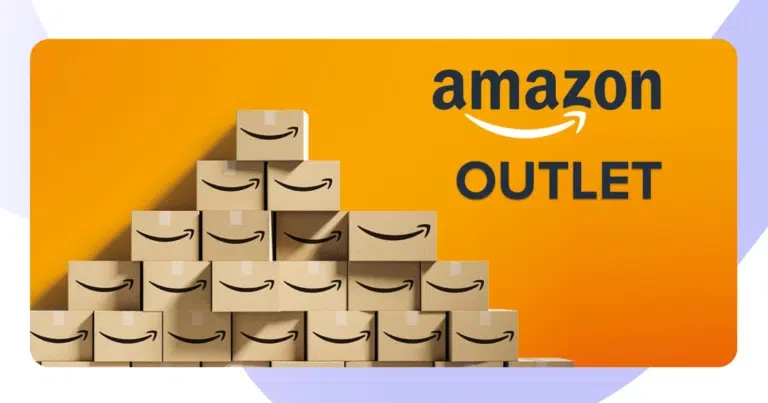
Current Statistics on Amazon Sellers
How Many Sellers Are on Amazon Today
As of the latest reports, Amazon hosts over 9 million sellers worldwide, with approximately 2 million actively selling on the platform. These active sellers are responsible for a substantial portion of the sales on Amazon, contributing to the platform’s diverse and expansive inventory. On average, Amazon adds around a million new sellers each year, reflecting the platform’s continuous growth and appeal.
Amazon’s marketplace is a dynamic ecosystem where new sellers join daily, and existing sellers expand their product offerings. This constant influx of new sellers ensures a wide variety of products and competitive pricing for consumers. Additionally, the introduction of programs like Amazon Outlet Overstock has provided sellers with more opportunities to manage their inventory and reach customers looking for deals.
Breakdown of Seller Demographics
Amazon’s seller community is incredibly diverse, spanning various regions and product categories. Here’s a detailed breakdown:
By Region:
- North America: The largest concentration of Amazon sellers is in North America, with the United States leading in both the number of sellers and sales volume.
- Europe: Countries like the United Kingdom, Germany, and France have a significant number of active sellers, making Europe a major hub for Amazon’s marketplace.
- Asia: China and India are rapidly growing markets, contributing a substantial number of sellers to Amazon’s global community. Chinese sellers, in particular, are known for their wide range of products and competitive pricing.
- Other Regions: Regions like South America, Australia, and Africa are also seeing a rise in the number of Amazon sellers, although they currently represent a smaller share of the overall seller base.
By Category:
- Electronics: This is one of the most popular categories on Amazon, with thousands of sellers offering everything from smartphones to home appliances.
- Clothing and Accessories: Fashion is another major category, with a vast array of sellers providing a wide range of apparel and accessories.
- Home and Kitchen: Products related to home improvement, kitchen appliances, and décor are highly popular, with many sellers specializing in these areas.
- Books: While Amazon started as a bookstore, it still remains a dominant player in this category, with numerous sellers offering both new and used books.
- Health and Beauty: This category has seen significant growth, with many sellers offering health supplements, skincare products, and beauty tools.
Understanding the demographics of Amazon’s seller community can provide valuable insights for new sellers looking to enter the marketplace. Whether you’re interested in exploring the Amazon overstock outlet or targeting a specific category, these statistics highlight the vast opportunities available on Amazon’s platform. For buyers, knowing how to navigate sections like overstock Amazon outlet and Amazon Prime Overstock Outlet can lead to great deals and unique product find
Types of Sellers on Amazon
Overview of Private Label Sellers, Resellers, and Handmade Sellers
Amazon’s marketplace is home to a diverse range of sellers, each with their own unique business models and strategies. Understanding these different types of sellers can provide insight into how the marketplace operates and help buyers find the best deals. Here are the primary categories of sellers you’ll encounter on Amazon:
- Private Label Sellers: These sellers create their own branded products and often manufacture them through third-party suppliers. Private label sellers have control over their product lines, allowing them to build unique brands and offer exclusive items. They invest heavily in product development, branding, and marketing to differentiate their products from competitors. Private label products are common in categories such as electronics, home goods, and health supplements.
- Resellers: Resellers purchase products from manufacturers, distributors, or other retailers and then sell them on Amazon. Unlike private label sellers, resellers do not create their own branded products but focus on sourcing popular items that are in high demand. Resellers often leverage their ability to buy in bulk and negotiate lower prices, which allows them to offer competitive pricing on Amazon. This category includes a wide range of products, from electronics to toys to clothing. Resellers frequently use programs like Amazon Outlet Overstock to move excess inventory and offer discounts to customers.
- Handmade Sellers: Handmade sellers offer unique, handcrafted items that are often produced in small quantities. These sellers typically focus on categories such as jewelry, home décor, and personalized gifts. Handmade sellers cater to buyers looking for one-of-a-kind products that cannot be found in mass-produced categories. Amazon provides a dedicated platform for handmade sellers called Amazon Handmade, which helps these artisans reach a broader audience.
Impact of Different Seller Types on the Marketplace
The presence of various seller types on Amazon significantly impacts the marketplace in several ways:
- Product Variety: The combination of private label sellers, resellers, and handmade sellers ensures a wide variety of products available to buyers. This diversity meets the needs of different consumer preferences, from exclusive branded items to unique handmade goods.
- Competitive Pricing: Resellers, in particular, contribute to competitive pricing on Amazon. By sourcing popular items at lower prices, they drive down the cost of products, benefiting consumers. Private label sellers also contribute by offering high-quality, exclusive products that often come at different price points.
- Innovation and Quality: Private label sellers push for innovation and quality in their product offerings to stand out in a crowded marketplace. This focus on quality and unique branding enhances the overall shopping experience for consumers.
- Support for Artisans: Handmade sellers add a personal touch to the marketplace by offering unique, handcrafted items. This not only supports small artisans but also provides buyers with access to exclusive and personalized products that are not available in traditional retail stores.
- Inventory Management: Programs like Amazon Outlet Overstock and Amazon Prime Overstock Outlet help sellers manage excess inventory and attract customers looking for deals. These programs are particularly beneficial for resellers and private label sellers who need to clear out overstock items. By listing products on the Amazon Outlet Overstock, sellers can reach bargain hunters and efficiently manage their inventory.
Understanding the different types of sellers on Amazon and their impact on the marketplace can help both buyers and potential sellers navigate the platform more effectively. Whether you’re exploring the overstock Amazon outlet or looking for unique handmade products, the diversity of sellers on Amazon ensures a dynamic and vibrant shopping experience.
Types of Sellers on Amazon
Overview of Private Label Sellers, Resellers, and Handmade Sellers
Amazon’s marketplace is home to a diverse range of sellers, each with their own unique business models and strategies. Understanding these different types of sellers can provide insight into how the marketplace operates and help buyers find the best deals. Here are the primary categories of sellers you’ll encounter on Amazon:
- Private Label Sellers: These sellers create their own branded products and often manufacture them through third-party suppliers. Private label sellers have control over their product lines, allowing them to build unique brands and offer exclusive items. They invest heavily in product development, branding, and marketing to differentiate their products from competitors. Private label products are common in categories such as electronics, home goods, and health supplements.
- Resellers: Resellers purchase products from manufacturers, distributors, or other retailers and then sell them on Amazon. Unlike private label sellers, resellers do not create their own branded products but focus on sourcing popular items that are in high demand. Resellers often leverage their ability to buy in bulk and negotiate lower prices, which allows them to offer competitive pricing on Amazon. This category includes a wide range of products, from electronics to toys to clothing. Resellers frequently use programs like Amazon Outlet Overstock to move excess inventory and offer discounts to customers.
- Handmade Sellers: Handmade sellers offer unique, handcrafted items that are often produced in small quantities. These sellers typically focus on categories such as jewelry, home décor, and personalized gifts. Handmade sellers cater to buyers looking for one-of-a-kind products that cannot be found in mass-produced categories. Amazon provides a dedicated platform for handmade sellers called Amazon Handmade, which helps these artisans reach a broader audience.
Impact of Different Seller Types on the Marketplace
The presence of various seller types on Amazon significantly impacts the marketplace in several ways:
- Product Variety: The combination of private label sellers, resellers, and handmade sellers ensures a wide variety of products available to buyers. This diversity meets the needs of different consumer preferences, from exclusive branded items to unique handmade goods.
- Competitive Pricing: Resellers, in particular, contribute to competitive pricing on Amazon. By sourcing popular items at lower prices, they drive down the cost of products, benefiting consumers. Private label sellers also contribute by offering high-quality, exclusive products that often come at different price points.
- Innovation and Quality: Private label sellers push for innovation and quality in their product offerings to stand out in a crowded marketplace. This focus on quality and unique branding enhances the overall shopping experience for consumers.
- Support for Artisans: Handmade sellers add a personal touch to the marketplace by offering unique, handcrafted items. This not only supports small artisans but also provides buyers with access to exclusive and personalized products that are not available in traditional retail stores.
- Inventory Management: Programs like Amazon Outlet Overstock and Amazon Prime Overstock Outlet help sellers manage excess inventory and attract customers looking for deals. These programs are particularly beneficial for resellers and private label sellers who need to clear out overstock items. By listing products on the Amazon Outlet Overstock, sellers can reach bargain hunters and efficiently manage their inventory.
Understanding the different types of sellers on Amazon and their impact on the marketplace can help both buyers and potential sellers navigate the platform more effectively. Whether you’re exploring the overstock Amazon outlet or looking for unique handmade products, the diversity of sellers on Amazon ensures a dynamic and vibrant shopping experience.
The Role of Amazon Outlet and Overstock
What is Amazon Outlet and Overstock
Amazon Outlet is a dedicated section on Amazon where customers can find discounted products that are overstocked, refurbished, or open-box. This section is designed to help sellers clear out excess inventory while offering consumers great deals on a variety of items. The Amazon Outlet Overstock section includes products from various categories, such as electronics, home goods, fashion, and more.
Amazon Overstock, on the other hand, refers to products that are surplus or overstocked, meaning there is more inventory available than what is being sold. These items are often moved to the Amazon Outlet to ensure they reach customers looking for bargains. The terms Amazon overstock outlet and overstock Amazon outlet are commonly used to describe this section where surplus items are sold at reduced prices.
How These Sections Help Sellers Manage Overstock Inventory
The Amazon Outlet Overstock section plays a crucial role in helping sellers manage their excess inventory. Here’s how:
- Clearing Excess Stock: Sellers often find themselves with surplus products due to overestimation of demand, seasonal changes, or discontinued items. Listing these products in the Amazon Outlet/Overstock helps sellers clear out their inventory quickly and efficiently.
- Reducing Storage Costs: Excess inventory can lead to higher storage costs, especially for sellers using Amazon’s Fulfillment by Amazon (FBA) service. By moving overstock items to the Amazon Outlet, sellers can reduce these costs and avoid long-term storage fees.
- Improving Cash Flow: Selling overstock items at a discount through the Amazon outlet overstock can improve a seller’s cash flow. It allows them to convert unsold inventory into revenue, which can then be reinvested into more popular or new products.
- Reaching a New Audience: The overstock Amazon outlet attracts a specific segment of customers looking for deals and discounts. By listing products in this section, sellers can reach a wider audience that may not have discovered their products otherwise.
- Maintaining Brand Reputation: Offloading excess inventory through the Amazon Outlet ensures that sellers maintain a clean and organized inventory. This helps in preventing stockpiling and potential negative impacts on brand reputation due to unsold, outdated products.
- Encouraging Repeat Purchases: Customers who find great deals on the Amazon Prime Overstock Outlet are likely to return for more purchases. This increases the likelihood of repeat business and customer loyalty for sellers.
Understanding what is Amazon Outlet and what is overstock on Amazon can help both sellers and buyers navigate the marketplace more effectively. Sellers benefit from efficient inventory management and cost savings, while buyers enjoy access to high-quality products at reduced prices. Whether you’re figuring out how to find Amazon Outlet or how to get to Amazon Outlet online, these sections offer valuable opportunities for everyone involved.
Finding and Shopping on Amazon Outlet
Tips on How to Find Amazon Outlet
Finding the Amazon Outlet section is straightforward, and knowing where to look can help you uncover great deals on a wide range of products. Here are some tips to help you locate the Amazon Outlet:
- Direct Link: The easiest way to access the Amazon Outlet is through a direct link. You can search for “Amazon Outlet” on your preferred search engine, or navigate directly by entering “Amazon Outlet” in the search bar on Amazon’s homepage.
- Amazon Menu: On the Amazon homepage, hover over the “All” menu (three horizontal lines) located on the top left corner. Scroll down to “Programs & Features” and look for “Amazon Outlet.”
- Search Bar: You can also use Amazon’s search bar to find the outlet section. Simply type “Amazon Outlet” or “overstock Amazon outlet” into the search bar and hit enter. This will direct you to the outlet deals.
- Browsing Categories: Once on the Amazon Outlet page, you can browse through different categories to find specific products. Categories may include electronics, home goods, fashion, and more, making it easy to locate items of interest.
Best Practices for Shopping and Getting Deals on Amazon Outlet
Shopping on Amazon Outlet can yield significant savings if you follow these best practices:
- Regularly Check for Updates: The inventory in the Amazon Outlet is constantly changing as new overstock items are added. Make it a habit to check the outlet regularly to find the latest deals and discounts.
- Use Filters: Utilize the filtering options available on the Amazon Outlet page to narrow down your search. You can filter by price, discount percentage, brand, and customer ratings to find the best deals that match your preferences.
- Read Product Descriptions Carefully: Since many items in the Amazon Outlet are overstock, refurbished, or open-box, it’s crucial to read the product descriptions carefully. This will ensure you understand the condition of the item before making a purchase.
- Compare Prices: Before making a purchase, compare the outlet price with the regular price to ensure you’re getting a genuine deal. Sometimes, checking other listings on Amazon can help you confirm the savings.
- Check Reviews: Customer reviews can provide valuable insights into the quality and performance of a product. Make sure to read reviews and check ratings before buying from the Amazon Outlet to avoid any disappointments.
- Look for Amazon Prime Deals: If you’re an Amazon Prime member, you may find additional benefits such as free shipping or exclusive discounts on outlet items. The Amazon Prime Overstock Outlet can offer even better deals for Prime members.
- Be Quick: Deals on the Amazon Outlet can sell out quickly due to limited stock. If you find something you like at a great price, don’t hesitate too long, as it might not be available later.
- Sign Up for Alerts: Consider signing up for deal alerts or newsletters from Amazon. This way, you can be notified about new additions to the outlet and special promotions, helping you stay ahead of other shoppers.
By following these tips, you can effectively navigate and shop the Amazon Outlet, taking full advantage of the discounts and deals available. Whether you’re looking to understand how to shop Amazon Outlet or seeking the best practices for finding bargains, these strategies will help you maximize your savings and enhance your shopping experience on Amazon.
The Impact of Amazon Prime on Sellers
How Amazon Prime Benefits Sellers
Amazon Prime is a subscription service that offers members a range of benefits, including free two-day shipping, access to streaming services, and exclusive deals. This service has a significant impact on sellers, providing multiple advantages that can enhance their success on the platform:
- Increased Visibility: Products eligible for Amazon Prime often receive higher visibility on the platform. These items are prominently displayed with the Prime logo, making them more attractive to Prime members who prefer fast and free shipping.
- Higher Sales Volume: Prime members tend to shop more frequently and spend more per order compared to non-Prime members. By offering Prime-eligible products, sellers can tap into this lucrative customer base, leading to increased sales volume.
- Enhanced Trust and Credibility: The Prime badge signals reliability and quality to customers, as Amazon closely monitors Prime-eligible products. This trust can translate into higher conversion rates and repeat purchases for sellers.
- Access to Exclusive Events: Prime sellers can participate in exclusive sales events such as Prime Day, which attracts millions of shoppers looking for deals. This can result in a significant sales boost and increased exposure for participating sellers.
- Better Shipping Solutions: Sellers using Fulfillment by Amazon (FBA) can take advantage of Amazon’s advanced logistics network, ensuring fast and reliable shipping for Prime members. This not only improves customer satisfaction but also frees sellers from the complexities of order fulfillment.
Role of Amazon Prime Overstock Outlet in Driving Sales
The Amazon Prime Overstock Outlet is a specialized section within Amazon Outlet that offers Prime members exclusive deals on overstocked items. This section plays a crucial role in driving sales and managing inventory for sellers:
- Effective Inventory Management: Sellers can list overstock items in the Prime Overstock Outlet, helping them clear excess inventory quickly. This reduces storage costs and frees up space for new products.
- Attracting Deal Seekers: The Prime Overstock Outlet attracts Prime members looking for bargains on high-quality products. By listing items in this section, sellers can reach a targeted audience eager to make purchases, increasing the likelihood of sales.
- Boosting Sales During Off-Peak Seasons: During slower sales periods, listing products in the Prime Overstock Outlet can help maintain steady sales. The allure of discounted prices encourages Prime members to continue shopping, even during off-peak times.
- Enhanced Product Discoverability: Products listed in the Prime Overstock Outlet benefit from increased discoverability. Prime members specifically searching for deals and discounts are more likely to come across these products, boosting visibility and potential sales.
- Leveraging Amazon’s Marketing: Amazon often promotes the Prime Overstock Outlet through various marketing channels, including emails and on-site banners. This additional exposure helps drive traffic to the outlet and, consequently, to the sellers’ listings.
By leveraging the benefits of Amazon Prime and strategically utilizing the Amazon Prime Overstock Outlet, sellers can enhance their success on the platform. These tools not only help in managing inventory effectively but also provide access to a loyal and high-spending customer base, driving increased sales and growth opportunities.
Strategies for Sellers to Succeed on Amazon
Effective Strategies for New and Existing Sellers
Navigating Amazon’s competitive marketplace can be challenging, but with the right strategies, both new and existing sellers can achieve success. Here are some effective strategies to consider:
- Optimize Product Listings: Ensure your product listings are well-optimized with high-quality images, detailed descriptions, and relevant keywords. Use Amazon’s keyword tools to identify the best search terms that will help your products appear in search results.
- Competitive Pricing: Regularly monitor your competitors’ pricing and adjust your prices accordingly. Consider using automated repricing tools to stay competitive without manually changing prices.
- Encourage Reviews: Positive reviews are crucial for building trust and improving your product’s visibility on Amazon. Encourage satisfied customers to leave reviews by following up with a thank-you email and requesting feedback.
- Invest in Advertising: Use Amazon’s advertising platforms, such as Sponsored Products and Sponsored Brands, to increase your product’s visibility. Target specific keywords and customer demographics to ensure your ads reach the right audience.
- Utilize Fulfillment by Amazon (FBA): Enroll in FBA to take advantage of Amazon’s extensive logistics network. FBA can enhance your product’s appeal by making it eligible for Prime, which attracts more customers and often leads to higher sales.
- Monitor Performance Metrics: Keep a close eye on key performance indicators (KPIs) such as sales volume, conversion rates, and customer feedback. Use this data to make informed decisions and identify areas for improvement.
- Stay Updated on Policies: Amazon’s policies and guidelines frequently change. Stay informed about these updates to ensure compliance and avoid potential issues with your account.
- Expand Product Line: Continuously explore new product opportunities and expand your product line. This diversification can help you capture a larger market share and reduce dependency on a single product category.
Leveraging Amazon Outlet/Overstock to Boost Sales
Utilizing the Amazon Outlet Overstock section can be a strategic move for sellers looking to boost sales and manage inventory effectively. Here’s how to leverage this platform:
- List Overstock Items: Identify products in your inventory that are overstocked or not selling as quickly as anticipated. Listing these items in the Amazon Outlet can help you clear out excess inventory and free up storage space.
- Offer Competitive Discounts: Attract deal-seeking customers by offering significant discounts on overstock items. Competitive pricing in the outlet section can drive higher sales volumes and attract bargain hunters.
- Promote Outlet Listings: Use your social media channels, email newsletters, and Amazon advertising to promote your outlet listings. Highlight the discounts and encourage your audience to take advantage of the deals.
- Bundle Products: Create bundles of overstock items to increase the perceived value and move multiple products at once. Bundling can also differentiate your offerings from competitors.
- Optimize Listings for Outlet: Ensure your outlet listings are as optimized as your regular product listings. Use high-quality images, detailed descriptions, and relevant keywords to attract customers.
- Monitor Outlet Performance: Track the performance of your products listed in the Amazon Outlet. Use this data to understand what types of products perform well and adjust your inventory strategy accordingly.
- Utilize Prime Overstock: If you’re using FBA, take advantage of the Amazon Prime Overstock Outlet. Prime members are more likely to purchase items with the Prime badge, and offering your overstock items through this channel can lead to faster inventory turnover.
By implementing these strategies, sellers can effectively navigate Amazon’s competitive marketplace and leverage the Amazon Outlet Overstock section to boost sales and manage inventory. Whether you’re a new seller trying to establish a presence or an existing seller looking to expand, these tips can help you succeed on Amazon.
Final Thoughts on Thriving in Amazon’s Marketplace
Amazon’s marketplace offers immense opportunities for sellers to reach a global audience and achieve significant success. By understanding the different types of sellers, the role of programs like Amazon Outlet Overstock, and the impact of Amazon Prime, sellers can strategically navigate this competitive landscape.
Implementing effective strategies such as optimizing product listings, leveraging advertising, and utilizing tools like FBA and the Amazon Prime Overstock Outlet can greatly enhance your chances of success. Regularly monitoring performance metrics and staying updated on Amazon’s policies will ensure you remain compliant and competitive.
Whether you are a new seller eager to make your mark or an established seller looking to boost sales and manage inventory, Amazon provides the resources and audience needed to thrive. Embracing sections like the Amazon Outlet/Overstock can help manage excess inventory efficiently while attracting deal-seeking customers.
With dedication, strategic planning, and continuous optimization, you can make the most of Amazon’s marketplace and achieve your business goals. Embrace the opportunities, stay informed, and adapt to the evolving landscape to thrive as a successful Amazon seller.
FAQs
What is Amazon Outlet?
Amazon Outlet is a dedicated section on Amazon where customers can find discounted products that are overstocked, refurbished, or open-box. This section helps sellers clear out excess inventory while offering consumers great deals on a variety of items across categories such as electronics, home goods, and fashion.
How can I find Amazon Outlet?
You can find Amazon Outlet by typing “Amazon Outlet” or “overstock Amazon outlet” in the search bar on Amazon’s homepage. Alternatively, you can navigate through the “All” menu (three horizontal lines) on the top left corner of the homepage, scroll down to “Programs & Features,” and select “Amazon Outlet.”
How does Amazon Prime benefit sellers?
Amazon Prime benefits sellers by increasing the visibility and attractiveness of their products to Prime members, who tend to shop more frequently and spend more per order. Products eligible for Prime are prominently displayed with the Prime logo, which enhances trust and credibility. Sellers can also participate in exclusive events like Prime Day, further boosting sales.
What is the role of Amazon Prime Overstock Outlet in driving sales?
The Amazon Prime Overstock Outlet helps sellers manage excess inventory by listing overstock items at discounted prices for Prime members. This section attracts deal-seeking customers, leading to higher sales volumes and quicker inventory turnover. The Prime badge also ensures faster shipping and increased customer satisfaction, further driving sales.
What are some best practices for shopping on Amazon Outlet?
To get the best deals on Amazon Outlet, regularly check for updates, use filters to narrow down your search, read product descriptions carefully, compare prices, and check customer reviews. Taking advantage of the discounts offered on the Amazon Outlet/Overstock section can help you find high-quality products at reduced prices.

